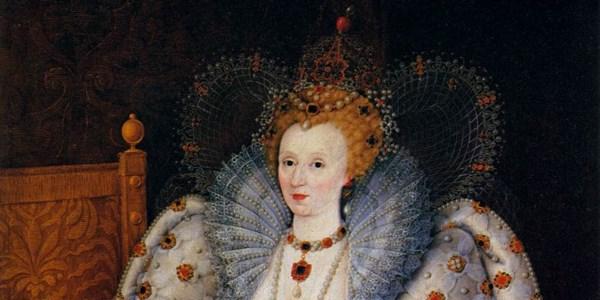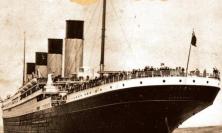At the juncture at which we leave Hilary Mantel’s tale as Wolf Hall and Bring Up the Bodies conclude, there has been a rupture in the relationship between England and Rome. But this was by no means the end of the story. Daniel Kearney takes us forward to the reign of Elizabeth I and explores the how the early Jesuits tried to preserve Catholicism in Tudor England.
The expense is reckoned, the enterprise is begun; it is of God, it cannot be withstood. So the faith was planted: so it must be restored.[i]
The Society of Jesus in the first years after its foundation in 1541 had no connection with the religious developments in England; the Jesuits played no role at all in the England of Mary Tudor. It was only after Elizabeth I’s accession in 1558, with the arrival on the continent of substantial numbers of Catholic exiles, that significant numbers of Englishmen began to enter the Society.
The beginnings of the 1580 Mission
For the first decade or so of Elizabeth’s reign, the primarily academic concerns of the English Jesuits did not set them apart very much from their fellow exiles. After the missionary priests began to enter England in 1574, however, the situation changed. In 1579, Pope Gregory XIII put the English seminary at Rome (which had been established in 1575 by William Allen) under the control of the Jesuits. Allen, who was regarded as the leader of the exiled English Catholics, visited Rome soon afterwards and took the opportunity to lobby for the Jesuits themselves to participate on the English mission, for which they had undertaken to train the seminary students. The General of the Society, Everard Mercurian, was reluctant to agree to Allen’s urgings, but the future cardinal’s persistence prevailed. In 1580, the Jesuit priests Robert Persons and Edmund Campion, and the Jesuit brother Ralph Emerson, were sent to England.
Allen and his missionary associates were certainly using political means to try to secure their goal: the preservation of the English Catholic religion in England. But Allen maintained that they had no political intentions, they were not traitors working for the overthrow of the Elizabethan regime. Campion’s Brag established the non-political character of the challenge to the English Church, affirming that the Mission was to rout false ignorance and reconcile Englishmen to the true Church: ‘I never had in mind, am strictly forbidden by our Father that sent me, to deal in any respect with matter of state or policy of this realm.’
Nonetheless, the 1580 Mission had to deal with intense persecution. The infrastructure for effective repression had been in place long before the arrival of the Jesuits. The Act of Supremacy of 1559 barred anyone who refused the oath from public office and university degrees. Anyone who maintained the power and jurisdiction of any foreign prelate or potentate, or handled printed books upholding papal authority, incurred penalties up to and including those for high treason. If a man heard Mass ‘but once in his life, upon a second refusal of this oath’, he too was guilty of high reason. After the 1571 Ridolfi Plot to assassinate Elizabeth, it was high treason to import papal bulls. Even the importing and distributing of Agnus Deis, crosses, pictures or beads was penalised.
But for some years these laws were applied with caution. Most papists probably went to Anglican churches, and the hope was that in the course of time any link, spiritual or emotional, with Rome would atrophy and die. The 1580 Mission ended such hopes. Campion and Persons were prepared to change the religious establishment, engaging their belief and efforts in a salvation-struggle for the souls of the people. Papists were assured they could no longer go to Protestant churches with a good conscience. Elizabeth and Cecil (Lord Burghley) reacted sharply to the challenge: by mid-summer 1580, leading members of the Catholic community were being rounded up, fined and imprisoned; by the end of the year, the persecution could be described as ferocious. ‘Everywhere … men, women and even children were being dragged to prison. They are bound in iron chains, stripped of their possessions, deprived even of light, and in proclamations, harangues and sermons their reputations are destroyed … as traitors and rebels.’[ii]
The response to all this on the part of Persons and his colleagues continued, for as long as possible, to be one of moderation: ‘just as remissness and tepidity commonly cause great harm in matters pertaining to the service of God, in the same way zeal and fervour, when immoderate, often hinder what otherwise might have been done for the honour of God.’[iii]
A mission of good will
The whole object of the mission was not to further papal aggression but to promote the cause of reunion, not by way of arms but by way of debate – the pen was to be mightier than the sword. Persons instituted the first secret printing press in England at Green Street, East Ham, probably towards the end of 1580. The first book to come off the press, composed and printed by Persons, was A brief discovrs contayning certayne reasons why Catholiques refuse to go to Church, in which he insisted that it was a not a spirit of rebellion but of conscience alone that moved Catholics. The book tried to be altogether conciliatory in tone. The dedication was, ‘to the most highe and mightie Princess Elizabeth by the grace of God, Queen of England, France and Ireland.’ She is addressed as, ‘most excellent and souverayne dread ladye and princess.’
Persons protested against the penalties laid on Catholics for following the religion of all the Queen’s ancestors. He rejected as particularly intolerable the widely-held opinion that Catholics were traitors; on the contrary, he said, they would be prepared to defend the Queen’s title to the death. All they asked in return was toleration of their beliefs and practices. In any case, before they were finally condemned, the papists had the right, surely, to be heard publicly in debate.
This was more than Elizabeth, Burghley and Walsingham dared to concede at the time. With the hard and ruinous Act of Persuasions in 1581, Elizabeth imposed a fine of £20 per month for absence from the Anglican churches, and classified the offence of reconciliation to Rome as high treason. Under the heat of persecution, Persons retired to the continent in August 1581, taking up residence in Rouen. Whether fear for his life caused Persons to leave England immediately after the arrest of Campion is debatable. Traditionally his departure has been described by English historians as a ‘flight’, a view held by his enemies among the secular priests and supported by the fact that for a full year, in letters to Catholics in England and to Father Agazzari, the rector of the English College in Rome, he deliberately encouraged the illusion that he was writing from London or from the Northern Shires. However, another explanation of his departure is that he knew his value as leader, organiser and writer. Perhaps he felt that to risk his life at this time would jeopardise the Catholic cause. Prudence, no less than courage, is a virtue. Persons must have known that his retiring to France might be interpreted as cowardice, and his secrecy about it may have been a precaution against such an interpretation.
The turning point
By about October, news arrived that Campion had been twice subjected to ruthless racking in the Tower. Soon after, on 1 December 1581, Campion was martyred, as were Ralph Sherwin and Alexander Briant. Persons, along with Allen, was tried in absentia and condemned to death. On the scaffold, Campion was taunted to express his opinions concerning the excommunication of Elizabeth, but he refused. As an undergraduate, Campion had been chosen to give the address of welcome to Queen Elizabeth when she visited Oxford; now his final act was to pray for her: ‘your Queen and my Queen.’
Until that point, the warfare, for Persons, was only to be engaged in with the pen; there could be no question of rebellion or recourse to force. But the brutal torture and destruction of his colleagues roused the soldier in Persons. Ironically, he had arrived at Dover in 1580 outfitted as an army officer returning from the Netherlands, resplendent with gold trim and a feather in his hat. Campion wrote a description of Persons, which indicated how thoroughly the disguise he had adopted fooled the customs officials. ‘He was dressed up like a soldier, such a peacock, such a swagger, that a man needs must have very sharp eyes to catch a glimpse of any holiness and modesty shrouded beneath such a garb, such a look, such a strut.’
This was the turning point in Persons’ attitude towards Elizabeth and her government. The olive branch had been thrown back in the face of Catholics. From now on, and until the end of the century, Persons was ready to help any who might achieve the overthrow of the tyrannical regime in England by armed force. This meant King Philip II of Spain and, to a lesser extent, Philip III who succeeded him in 1598. Persons and his order would eventually become, in the eyes of their fellow Catholics, the symbol of the politically militant wing of English Catholicism, its alliance to Spain and its advocacy of military force against Elizabeth.
However, while Persons and other Jesuits and priests in exile on the continent were ready to countenance invasion as a means to overthrow the Elizabethan tyranny, they were not prepared to envisage assassination. This solution was very much in the air at the time. Elizabeth, Burghley and Leicester had favoured this method for resolving the problem of Mary, Queen of Scots, who had been imprisoned by her cousin Elizabeth when she fled to England after the Protestant Lords’ revolt of 1568. Even Pope Gregory XIII favoured a plot to assassinate the Queen after the brutal and final rejection of the 1580 Mission:
Since that guilty woman of England rules over two such noble kingdoms of Christendom and is the cause of so much injury to the Catholic faith and loss of so many million souls, there is no doubt that whosoever sends her out of the world with the pious intention of doing God service not only does not sin but gains merit.[iv]
Nevertheless, while the subject was discussed as a matter of theory in the Jesuit schools of theology, it was never countenanced as a practical expedient. In view of the handle it provided for anti-Jesuit propaganda it was soon forbidden even as a topic for theoretical discussion.
The persecution intensifies
The persecution that followed the 1586 Babington Plot was widespread and systematic. In a letter written about this time, English Jesuit William Weston commented on the persecution:
The sudden hurricane of persecution brought into instant jeopardy not merely the temporal goods of Catholics, but the security of their very lives … Although it raged for several months in its fury and its savagery beyond human endurance, now (I hear) it is less severe. It is not that they are sparing any Catholic, man or woman, but simply that it is impossible for such violent disturbance of property not to bring with it great disorder in all parts and the imminent ruin of the whole country.[v]
It was in this atmosphere that Henry Garnet succeeded Weston as Superior of the Jesuits in England. He had three subjects; two of them, Weston and Emerson, were in prison. Several factors, however, brought the Jesuits greater prominence and importance than their numbers alone would have warranted. The tight but flexible organisation of the Society could be adapted to the conditions of the English mission with relative ease. In this respect, the Jesuits were far ahead of the seminary priests, who had no superior within England and whose international connections were not as extensive or reliable as those of the Jesuits. They lacked also the espirit de corps that Jesuit life fostered. Under Garnet, many secular priests appear to have functioned in effect as part of a Jesuit-run network.
As time passed, envy and suspicion developed. The Jesuits regarded England as a missionary country and themselves as active evangelists. However, their secular clerical opponents believed that the proper place for members of a religious order was the cloister. They were prepared to do without the services of the Jesuits, even though, since Elizabeth’s accession, no pope had been willing to appoint new bishops for the English Catholics, probably because it would have been impossible for men in hiding to maintain any episcopal dignity. The extent to which individual Jesuits were identified with the pro-Spanish party abroad did not help relations with the secular clergy and suspicion concentrated especially on Robert Persons, whose policies and influence in high places were believed to work to the detriment of the real interest of Catholics at home.
Just as the Act of Persuasions had been the response to the endeavours of Persons and Campion, the counter-measure to Garnet’s activity was a new proclamation of 1591, which ushered in a new severity. The proclamation recited the dangers to the realm from the King of Spain (the defeat of the ‘invincible’ Armada had not removed the possibility of another attack); and it branded all priests his secret agents, ‘unnatural subjects of the Kingdom’, and the students in the seminaries abroad ‘a multitude of dissolute young men, who partly for lack of living, partly for crimes committed had become fugitives, rebels and traitors.’ Every phrase of the proclamation was directed to inflame hatred against Catholics, particularly priests, as a prelude to a new persecution.
Catholic opposition to the Mission
By 1596, Persons was in Spain, and Garnet had reluctantly intervened in a dispute about the lifestyle of the prisoners at Wisbech Castle, where Weston had been held since 1588 along with other Catholics who were perceived to be potential revolutionaries. With the ‘Wisbech stirs’ still raging, some of the secular clergy planned a voluntary association, completely independent of the Jesuits, which they hoped might lead the pope to grant them bishops. Advocates of the plan later asserted that Garnet advised Persons about it, and that the main purpose of Persons’ subsequent return to Rome from Spain was to frustrate it and to substitute the creation of an Archpriest subservient to the Society. Clement VIII delegated to Cajetan, Cardinal Protector for England, the authority to work out a compromise. On 7 March 1598, Cajetan wrote to George Blackwell, a secular priest who had been back in England for many years, giving him the title and authority of an Archpriest.
After the appointment of the Archpriest Blackwell in 1598, a serious movement gelled within the Catholic community to discredit the Mission and its Jesuit component. The objective was to convince both the Queen and the pope that the Jesuits had subverted the original impetus behind the English Mission, which had been to renounce the political connection with Spain and to emphasise the essential loyalty inherent with English Catholicism.
But the Mission continued. In 1602, Persons forwarded to Garnet two papal briefs to be published at Elizabeth’s death, directing Catholics to prevent, if possible, the accession of any non-Catholic monarch. Elizabeth’s reign ended with her death on 24 March 1603 but neither the Jesuits, nor the secular priests nor the Catholic laity raised a hand to oppose the accession of James Stuart.
Daniel Kearney is a former headmaster at an independent Catholic college. He is currently Head of Religious Studies at Leweston School in Dorset.
[i] Campion’s Brag. Listen to a reading of Campion’s defence of the faith at: https://soundcloud.com/jesuitsinbritain/campions-bragge?in=jesuitsinbritain/sets/letters-poetry-and-other
[ii] William Weston, The Autobiography of an Elizabethan, trans. Philip Caraman (London: Longmans, Green & Co, 1955)
[iii] ‘Instructions given to Fr Robert Persons and Fr Edmund Campion,
Founders of the Mission to England, 1580’ in L. Hicks, Letters and Memorials of Father Robert Persons, S.J., volume 1 (London: Catholic Record Society, 1942), Latin 316–319; English translation 319–321.
[iv] From a letter from the papal secretary to the Nuncio at Madrid, 1580
[v] Weston, The Autobiography of an Elizabethan






